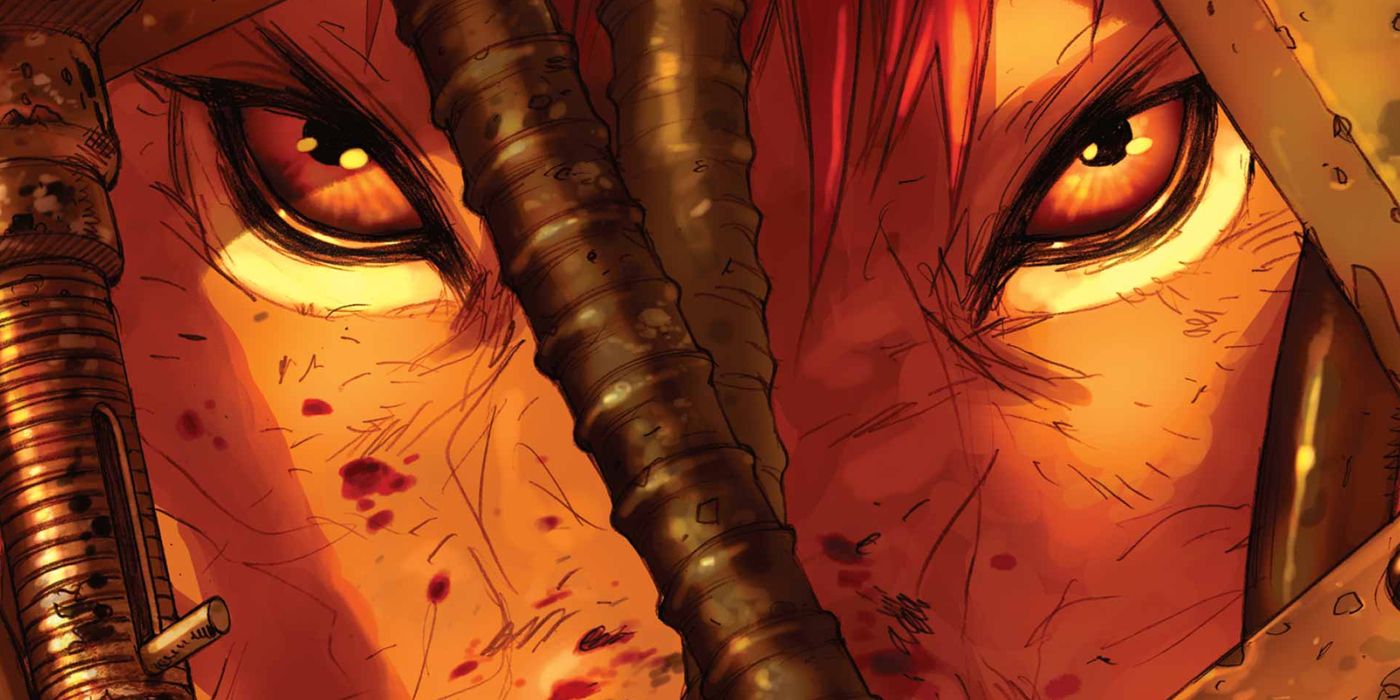Before co-creating Saga, writer Brian K. Vaughan followed in Maus’ footsteps by depicting war’s consequences in the graphic novel Pride of Baghdad.
The recent controversy surrounding its banning by a Tennessee school board helps illustrate how timeless Maus is. The Pulitzer Prize-winning graphic novel by cartoonist Art Spiegelman became a pillar of the graphic canon through a combination of craft that it shared with other seminal works like Watchmen and how it explores unfortunately timeless subject matter.
Spiegleman makes the horrors of war approachable by using a classic comic book trope; anthropomorphic animals as stand-ins for people. It’s the best example of telling a sophisticated story with a storytelling technique associated with the “funny animal comic” sub-genre, but it’s not the only one. A more recent example comes from a surprising co-creator, the man behind creator-owned genre comics hits like Y: The Last Man, and the recently returned Saga, Brian K. Vaughan.
Pride of Baghdad is a 2006 graphic novel written by Vaghaun, drawn by Nico Henrichon, lettered by Todd Klein, and published by DC Comics’ mature-readers imprint Vertigo. Vaughan uses a real-life story from the Iraq War as inspiration, casting a pride of lions that escaped from the Baghdad Zoo during the U.S. Coalition’s invasion of Iraq in 2003 to comment on the war itself.
Each lion in the pride represents a different perspective on the war. The central philosophical conflict is between lionesses Safa and Noor. Safa is an elder lioness who has become accustomed to captivity and understands the dangers of the outside world all too well. Noor is a younger lioness with a cub, Ali, who longs for freedom. Unfortunately, her fellow imprisoned animals do not share her goals. Consistently, she’s frustrated by her inability to rally them to overthrow their human oppressors.
The invasion takes Safa and Noor’s argument out of the theoretical. Stray bombs free the captive animals immediately after their keepers abandon them. While Safa initially claims she will stay behind in the zoo, she eventually joins the rest of the pride in the outside world. For her part, Noor isn’t as bold about her newfound freedom as she was when she was trying to incite it. Safa and Noor serve as stand-ins for the sides in the debate about the Iraq War during its build-up.
Safa represents the perspective that, no matter how horrible Iraqi dictator Sadam Hussein might have been, his remaining in power was preferable to the chaos of the United States and its allies imposing regime change. Noor sees the war as a form of liberation for the oppressed animals, evoking an argument Iraq War proponents used to make their case, alongside claims Iraq had weapons of mass destruction.
The lions don’t encounter any live people until their journey’s end. They meet other animals, from a turtle who’s lived through multiple wars in Iraq to an abused captive lion named Rashid, implied to be one of Hussien’s son Uday’s pets. The book’s big action set piece involves a battle with a bear that caused Rashid to starve to death by stealing his food. They all offer a perspective that the previously captive lions lack.
Thanks to its alpha male, Zill, the pride fights and defeats the bear. Their victory is short-lived. After finally experiencing the sunset Zill waxed poetic about for so long, U.S. forces shoot the lions. The story ends with a caption, acknowledging that the lions who inspired the tale suffered the same fate. It ends with the words “there were other casualties as well” amid an aerial view of Baghdad.
That ending sequence beautifully illustrates how Pride of Baghdad gets its message across. Thes storytelling conceit of anthropomorphized lions allowed Vaughan, Henrichon, and Klein to tell a story about the reality of war in a fantastic way without diminishing its impact. It’s a move straight from Maus‘ playbook. The death of the lions at the end is a gut punch, making it easier to understand what the invasion did to civilians in Iraq unfortunate enough to be caught in it.
The creators behind Pride could have used human beings. Still, they wouldn’t have reached the kind of audience that might feel indifferent to biographical graphic novels like the banned book Persepolis that tell stories about war from a realistic, personal perspective. While not poetically subtle, Pride gets its point across without being didactic. It had a good chance of illustrating the consequence of the war to an audience that might shy away from stories that are “too political” but can invest in a story whose premise could be a Disney animated movie with some sanitization.
About The Author
For all the latest Comics News Click Here
For the latest news and updates, follow us on Google News.

